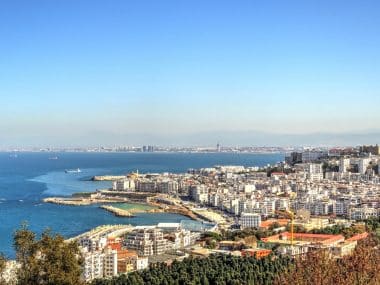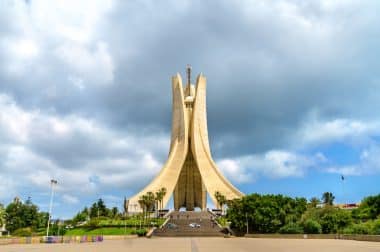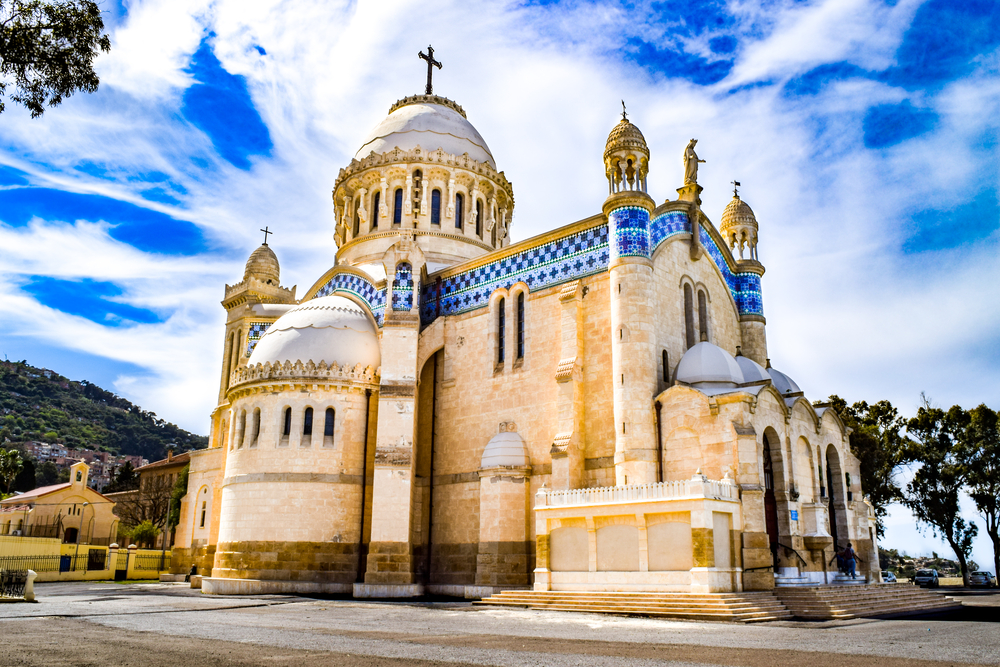Algiers – The capital and namesake of Algeria is the center of the country with its almost 4 million inhabitants. Located directly on the Mediterranean Sea, the city has always played a leading role in the country’s economic development. The combination of French colonial style and oriental charm also makes Algiers very popular with tourists.
How to get to Algiers
Houari Boumedienne International Airport can be reached from most European cities in about three hours. A tried-and-tested, well-developed bus and train network ensures convenient connections to the city. By ferry, you can also get to Algiers from more southern places in Spain (Alicante), France (Marseille) and Italy in less than a day. On a Mediterranean cruise , the port is a welcome port of call and invites you to go ashore.
The flight time from Germany to Algiers, Algeria depends a lot on the specific departure city in Germany. Direct flights from Germany to Algiers are usually available from larger airports, such as Frankfurt or Berlin. A direct flight takes about 2 to 3 hours.
Geographical features

Algiers is crossed by several rivers and rivers, all of which flow into the Mediterranean Sea. Since Algiers is located on the mountain slopes of a foothill of the Atlas Mountains, the coast cascades down to the shore for over 300 meters. Here, heavy rainfall can turn the tranquil rivers into raging torrents and floods threaten the low-lying areas.
The areas in and around Algiers are located in an earthquake-prone zone, as the Atlas Mountains form a plate tectonic border between Europe and Africa. Because the Eurasian plate rubs against the African plate, more or less violent tremors can occur from time to time.
Sights

The main tourist resorts can be reached by metro or buses. A car is usually unnecessary for exploring if you don’t want to explore the wider area, as everything worth seeing is within walking distance or easy to discover by bus and train. For a beach holiday, the town of Sidi Fredj, about 20 km west of Algiers, is a nice place to go, including the relatively high lighthouse.
The imposing, 92-metre-high martyr monument, which commemorates independence from France , is worth seeing. Concrete monument designed in the form of stylized palm leaves, it includes an Islamic-style tower in its center at a height of about 14 meters.
The Basilica of Notre Dame d’Afrique was built in the middle of the 19th century in the Romanesque-Byzantine style. Inside, it is decorated with oriental but also western elements. It is located on a 124-meter-high cliff, from which you have a magnificent view of the city and the bay. It can also be reached by another attraction, namely by cable car.
Front de Mer is a magnificent promenade on the harbour bay. The best way to find it is by subway and a leisurely footpath. Past the typical, picturesque white houses, you can enjoy a magnificent view of the Mediterranean Sea from there.
Of course, the Kasbah should not go unmentioned. This is the name given to the old town, which was declared a World Heritage Site in 1992. Here you will be captivated by the narrow streets and historic buildings. Numerous mosques and palaces from Moorish times are located here.
La Grande Poste is a post office built by the French at the beginning of the 19th century and is considered one of the most beautiful ever. It is located in the middle of the city and is easy to find by metro.
Also easily accessible by metro, the Jardin d’Essai is an 80-hectare botanical garden with an amusement park not far from the Martyrs’ Monument. It is one of numerous parks and gardens in Algiers. Especially when the sun is burning, a walk under palm trees and exotic perennials is a popular alternative here.
In addition, there is an opera house and several museums to visit in Algiers. Most of these are located in the more modern part of the city. Just outside, a water park is a popular destination for the whole family. For lovers of fauna, a zoo east of the city is worth a possible trip.
Climate in Algiers
In summer, the climate in Algiers is pleasantly warm and dry. The winters are quite fresh. The most abundant rainfall is recorded between October and April. The best time to travel is accordingly in spring and summer, when the sun shines for up to 14 hours a day. The climate on the Mediterranean coast is comparable to that of southern Spain. Even temperatures around 30 degrees can be easily endured by the light sea breeze.
| Month | Average maximum temperature (°C) | Average low temperature (°C) | Precipitation (mm) |
|---|---|---|---|
| January | 17 | 6 | 81 |
| February | 18 | 6 | 72 |
| March | 19 | 7 | 58 |
| April | 20 | 9 | 58 |
| May | 24 | 13 | 25 |
| June | 28 | 17 | 13 |
| July | 32 | 20 | 3 |
| August | 32 | 20 | 8 |
| September | 29 | 18 | 28 |
| October | 25 | 14 | 58 |
| November | 20 | 10 | 89 |
| December | 17 | 7 | 88 |
Other
Even though the official language is Arabic, knowledge of French is advantageous, as English is almost always spoken and understood only by the younger generation. However, public names of squares and streets are in Latin script, so you can certainly get along here.
In Algiers there is a rich selection of restaurants, which mainly offer French or Italian dishes. Although the sauces, some of which are spicy, differ from European cuisine


